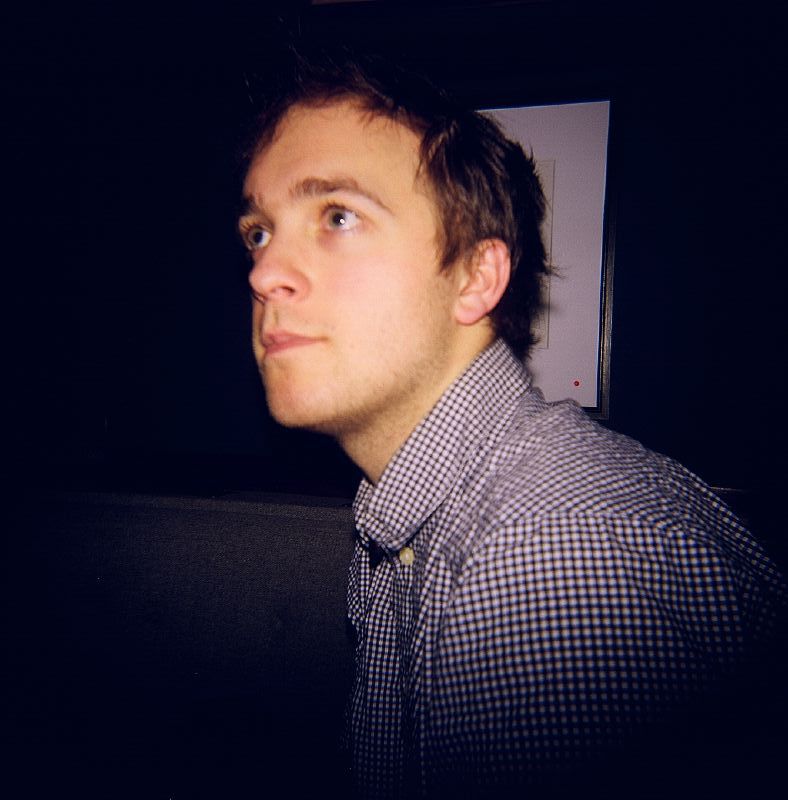Justin Taylor's novel The Gospel of Anarchy is set mainly in a punk house in Gainesville, Florida called Fishgut, founded by a mysterious figure called Parker, whose particular brand of "anarcho-mysticism" got him evicted from his previous squat.
This is Taylor's description of Parker:
This is Taylor's description of Parker:
"Parker was raised in religion. Thomas knows that much. He ran away from home as a teenager, from some fucked sect of -- what were they? Snake-handlers, Adventists, Baptists, speakers-in-tongues, Witnesses, maybe renegade Mormons; no way to be sure. He was long unchurched by the time Thomas met him, but the language, the forms of thought were stuck fast. They were who he was. Parker was a big-b Believer, he had a God-entranced vision of all things, but because of how Thomas grew up - secular atheist Jew, same as David - the very idea of belief was foreign to him, and he did not for a long time comprehend what it was he was dealing with."
Taylor is interested in merging the languages of anarchism and religious (or mystical) belief. Part of the underlying intellectual atmosphere of my PhD is the perhaps unexpected interactions and overlaps between left-wing politics and religion in the United States. Though the academic reasoning behind this is found in the rich language of David Foster Wallace, there is a personal rationale too: these two apparent opposite belief-systems were the poles of my childhood. Like Parker, "the language, the forms of thought" are "stuck fast" in my intellectual make up.
Reading Taylor's novel I was reminded of the photos of Mike Brodie, better known as the Polaroid Kidd, who a few years back surfaced with the photos of young punks riding trains around the States which punctuate this piece. In 2007, the Needles and Pens gallery in San Francisco held an exhibition of his photographs and the Kidd was interviewed on Fecal Face's SF page (which can't be found there any longer, as far as I could tell, but is pasted here).

The Kidd's work depicts a life not alien so much as alienly familiar. I have seen Walker Evans' photos for the book on the US south's sharecroppers he did in the 30s with James Agee Let Us Now Praise Famous Men (another religious reference), and I've read Woody Guthrie's (semi-fictional or not) autobiography Bound for Glory (another?) with its tales of train-hopping hobos. Guthrie, along with Whitman, made way for the both the Beats and Dylan's championing of this lifestyle. Allen Ginsberg, a tireless left-wing campaigner, claims his poetry career began with visions of William Blake, and Dylan himself discovered Christianity in the 1980s. The Kidd's photos reinvigorate that accumulated mythology with a twenty-first century sensibility that retains the conviction that different types of lives are possible.
Reading Taylor's novel, I wanted to see the Kidd's photos again, to confirm the similarities between novel and image. But searching for either "Polaroid Kidd" or "Ridin' Dirty Face" (his old website) on Google returns nothing but references to him. Clicking on Needles and Pens' link to his website returns a 404 Error - Page Not Found message and typing in PLRDS.com (which Brodie used to manage) takes you to an anonymous place-holder. Apart from the gallery's page, mixing the Kidd's photos and those of people looking at them, we are left with blogs written by others like me who discovered him one way or another and were moved to write something about them.
But maybe the Kidd's disappearance is peculiarly apt. If train-hopping entails moving from place to place, vanishing in the dead of night, then his dematerialization from the internet is just another movement. His status in this strange parallel world is now one of a ghost; glimpses, flashes and traces remain in embedded photos (themselves copied from digital versions of physical, chemical reactions) and fond remembrances in comments sections including from apparent family members of the Kidd's.





No comments:
Post a Comment